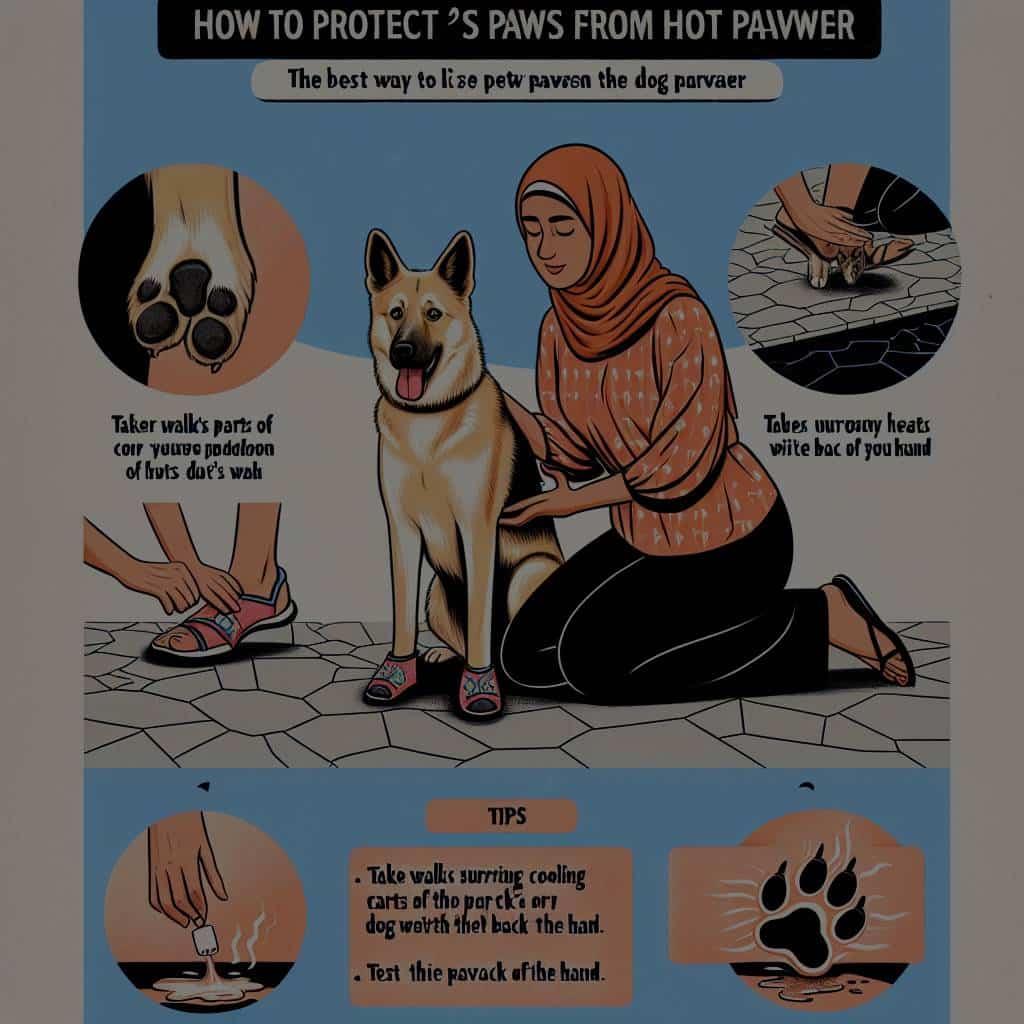As summer rolls in, you are probably looking forward to long, enjoyable walks with your dogs. Yet, while you might be well-prepared with sunscreen, hats, and water bottles, what about your pets? The scorching heat can pose a significant threat to your furry friends, particularly their paws. The hot pavement can burn the delicate pads on their feet, leading to discomfort and pain. But don’t worry, there are effective ways to protect your dog’s paws from hot surfaces during summer. In this guide, we will provide you with practical solutions to keep your pet safe and happy throughout the hot season.
Understanding the Danger to Your Dog’s Paws
Before we discuss the preventive measures, let’s first understand why hot pavements are dangerous for your dog. Your pet’s paws may seem tough, but they are not immune to the elements. Prolonged exposure to hot surfaces can cause burns, blisters, and severe damage to their sensitive pads.
Have you seen this : How to Ensure Adequate Vitamin D for Indoor Dogs?
In extreme heat, pavements, sidewalks, and roads can become scorchingly hot. Asphalt, for instance, can absorb and retain heat for long hours, making it dangerous for your dogs even after sunset.
The higher the temperature, the hotter the pavement will be. For instance, when the ambient temperature is 77°F, asphalt can heat up to 125°F. At such temperatures, skin destruction can occur within 60 seconds.
Topic to read : How to Introduce a Dog to a Newborn Baby with Sensory Impairments?
Your dog’s feet are not just walking tools – they also act as heat absorbers and releases, which help regulate their body temperature. Paws are covered in special sweat glands that aid in cooling, but when they walk on hot surfaces, these glands can overheat, making your pet more vulnerable to heatstroke.
Recognizing the Signs of Paw Burns
Recognizing the early signs of paw burns can help you provide timely help to your dogs. Many dogs will show signs of discomfort if their paws are getting too hot or if they have already suffered burns. Some common signs include:
- Limping or refusing to walk
- Licking or chewing at the feet
- Pads darker in color
- Blisters or redness
- Visible wounds or cracks on the pads
If you notice any of these signs, it’s essential to get your pet away from the hot surface immediately and cool their paws down with room temperature water. Always remember to contact your vet if you suspect that your dog has burnt their paws.
Paw Protection Essentials
In hot weather, prevention is key to keep your dog’s paws safe. Consider these protection essentials:
Dog Booties or Shoes
Just like you wouldn’t walk barefoot on a hot pavement, neither should your dog. Dog booties or shoes can provide a protective barrier between your dog’s paws and the hot pavement. They come in various sizes and styles to suit different breeds and paw sizes. Make sure to introduce these gradually to your pet, allowing them to adjust to the new sensation of wearing shoes.
Paw Balms
Paw balms are designed to moisturize and protect your dog’s paw pads. These balms can act as a barrier against hot pavements, salt, snow, and other harsh surfaces. Ingredients like beeswax and shea butter can help seal in moisture, preventing pads from cracking and damage.
Avoid Hot Surfaces
The simplest way to protect your dog’s paws from hot pavements is to avoid them altogether. Try to walk your dog early in the morning or late in the evening when the temperatures are lower. Grass and dirt paths are also cooler alternatives to hot asphalt or cement.
Training Your Dog For Hot Weather Walks
Training your pet for hot weather walks can also be an effective way to ensure their safety. If your dog is comfortable wearing booties, that’s a great start. However, not all dogs adapt easily to wearing shoes. If that’s the case with your pet, it might be beneficial to work with a professional dog trainer who can help your dog get accustomed to summer footwear.
Additionally, work on training your dog to walk on different surfaces – such as grass or dirt paths – instead of hot pavement. This can be particularly helpful during the peak summer months when the pavement can get extremely hot.
In summary, your dog’s paws are sensitive and require special attention during the hot summer months. By recognizing the signs of paw burns, investing in paw protection essentials, and training your dog for hot weather walks, you can ensure your pet has a safe and enjoyable summer.
The Importance of Aftercare for Burnt Paws
After discussing preventive measures, it’s equally important to understand the aftercare involved if your pet has suffered from paw burns due to hot pavement. The recovery from paw burns depends largely on their severity and can range from a few days to a few weeks.
Your vet will provide the best course of action based on the burns’ extent. This could include applying a topical antibiotic and bandaging the foot. In severe cases, your pet might require pain medication or even surgery.
Regardless of the severity, you should restrict your dog’s activities to allow the paws to heal. Avoid long walks and hot surfaces, and make sure your dog doesn’t chew or lick their paws. You can use a pet cone if necessary to prevent this.
Aftercare also involves regular cleaning and dressing changes, which your vet will instruct you on. Be sure to follow these guidelines and keep a close eye on the healing process. This way, you can spot any signs of infection – such as increased redness, swelling, or pus – early on.
Remember, the key to effective aftercare is timely action. If you suspect that your dog has burnt their paws, act immediately to cool them down and reach out to your vet for professional advice.
Conclusion: Hot Pavement and Your Dog’s Paws
Your pet’s paws are one of their most vital and yet most vulnerable parts. They serve not only as a means for them to explore the world but also as a vital factor in regulating their body temperature. As such, protecting your dog’s paws from hot surfaces during summer is integral for their overall wellness and happiness.
The preventive measures mentioned in this guide – including investing in dog shoes or paw balms, avoiding hot surfaces, and training your dog for hot weather walks – can significantly help safeguard your furry friend against the dangers of hot pavement.
If your dog does suffer from paw burns, make sure to provide proper aftercare, including appropriate medical attention and rest. In conclusion, being aware of the risks and taking timely action can help keep your pup safe and ensure they continue to enjoy their walks, regardless of the weather.
Remember, the pavement’s temperature can be deceptive – if it’s too hot for your hand, it’s too hot for your dog’s paws. Be a responsible pet parent and ensure your dog’s comfort and safety in the scorching summer heat.






